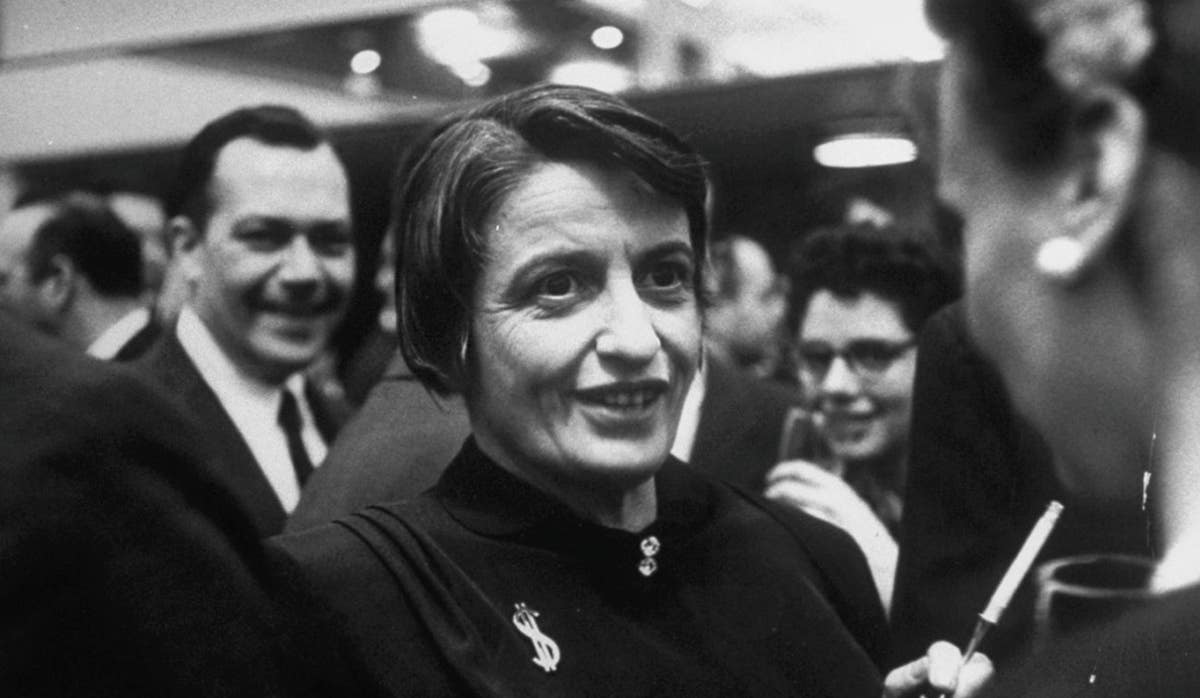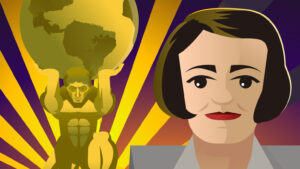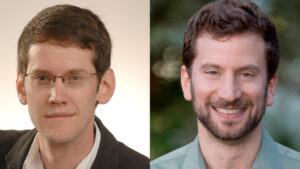I’m glad that my novel Atlas Hugged has come to the attention of The Ayn Rand Institute via Ben Bayer and Keith Lockitch, including their video conversation and Ben’s comment on my Nautilus article I have Come to Bury Ayn Rand. Far from succumbing to a war of words, I hope to engage Ben, Keith, and others at the ARI in a productive exploration of the major ideas associated with Ayn Rand
What ideas are those? ARI’s New Ideal website has done my work for me by distilling them into three words: Reason, Individualism, and Capitalism.
These are indeed the major ideas that I critique in Atlas Hugged, my nonfiction writing, and my scientific research over a period of five decades. To set the stage for a productive dialog, we need to understand the relationship between a set of important ideas, a person such as Ayn Rand who stands for the ideas, and a fictional representation of the ideas such as Atlas Shrugged and Atlas Hugged.
The set of ideas: The trio of reason, individualism and capitalism has long historical roots and has been the dominant intellectual tradition in WEIRD (Western, Educated, Industrial, Rich, and Democratic) societies for the last 70 years. It is represented by neoclassical economics, methodological individualism in the social sciences, and the selfish gene tradition in my own field of evolutionary biology. It needs to be replaced by a paradigm that recognizes multiple levels of functional organization and I am prepared to argue this point at any level—“hard” evolutionary science, high-level economic theory, in plain English that anyone can understand, or in fiction.
People who stand for the ideas: For every important set of ideas, some people make outsize contributions and become iconic representations of the ideas to large audiences. Examples include Charles Darwin, Sigmund Freud, B.F. Skinner, Friedrich Hayek, and Ayn Rand. For intelligent discourse to take place, it is important to distinguish the real person from their iconic avatar. It is especially important to avoid treating the person as an oracle whose every word becomes part of a sacred text. Evolutionary scientists do a pretty good job of this with Charles Darwin. Yes, we revere him and drop his name at every opportunity, but we also know that modern evolutionary science has gone far beyond him and that in some respects he could not see past the assumptions of the Victorian Age.
Separating the person from the ideas is especially important in the case of Ayn Rand. Yes, she gave voice to the trio of ideas in her Objectivist philosophy and fiction. The most sympathetic way to understand her is in the context of the worst of Soviet-style socialism that no one wants to repeat. But it is also important to understand the degree to which her movement departed from its own principles and was disconnected from so much else that contributed to our own Age of Individualism, which we so badly need to go beyond. If a society such as ARI confines itself too much to a single iconic figure, it runs the risk of making itself irrelevant in its own intellectual bubble.
Fictional representations of the ideas: In my opinion, the wisest thing that Ayn Rand ever wrote was “Art is the indispensable medium for the communication of a moral ideal”. Here is how I describe my fictional character Ayn Rant in Atlas Hugged, through the eyes of her 13-year old son, John Galt II.
She was like a mosaic artist using truth as her tiles. If a particular fact fit, she would use it intact. Otherwise she would clip it until its shape was just right. Remaining gaps were filled with wholesale fictions presented as fact. The completed work of art acted like a magic spell to convince people of the reasonableness of the Objectivist creed. The biggest deception of all was to call the movement Objectivism, as if it could be fully justified by rationality and science (p 13).
The metaphor of the mosaic artist describes not only my character of Ayn Rant but the very essence of art, including fiction, which freely departs from factual reality to create vehicles for moral ideals. Sorry, Ben and Keith, but this means that when I function in mosaic artist mode, I’m free to do pretty much what I want with my character of Ayn Rant. If you want to hold me to scholarly standards, then you need to engage me as a scholar abiding by a different set of rules.
This is something that I am eager to do and I even nurture the hope that our conversation can be a process of constructive disagreement, which is how I define scholarship and science. To make solid progress, I suggest jointly organizing an online symposium on the ARI’s own distillation of the essence of Ayn Rand: Reason, Individualism, and Capitalism. Please be prepared to discuss the ideas writ large, not just the contributions of one person. Think of the symposium as the real-life version of the dual of speeches that takes place between John Galt II and John Galt III in Atlas Hugged, but held to the standards of the Cult of Scholars.
Hugs!
David Sloan Wilson




